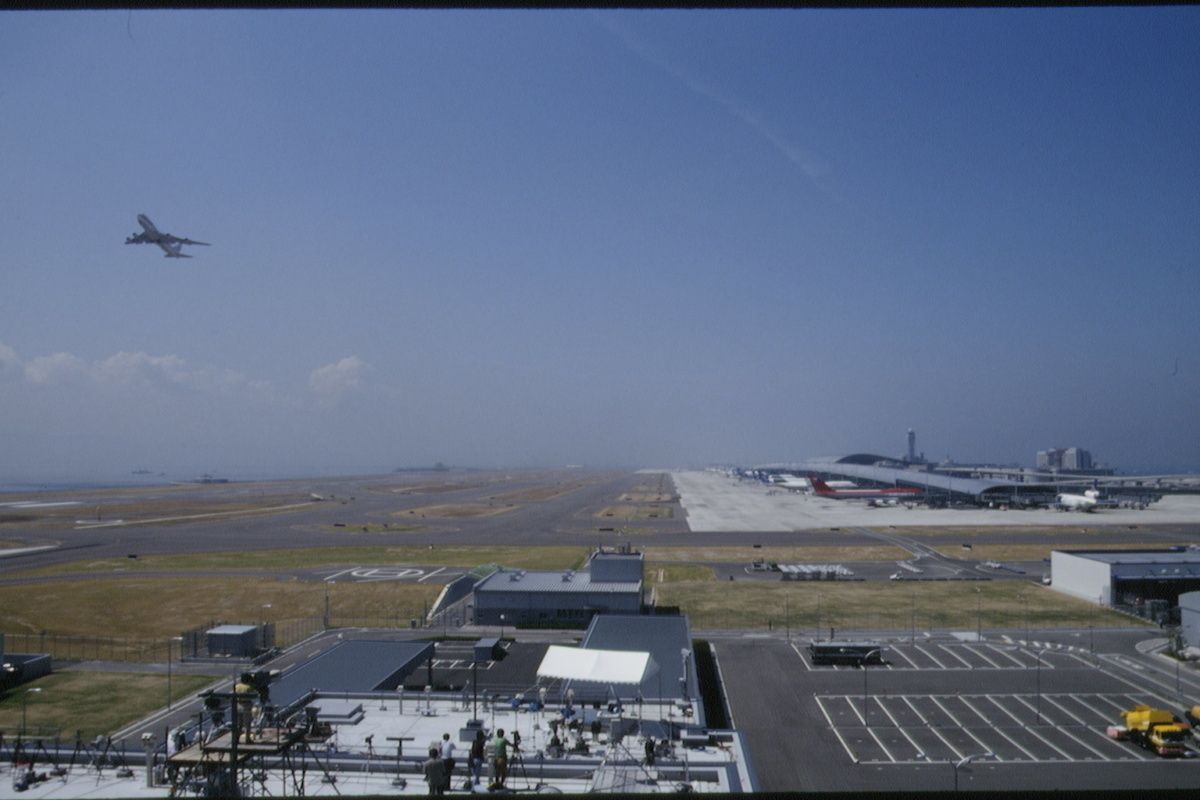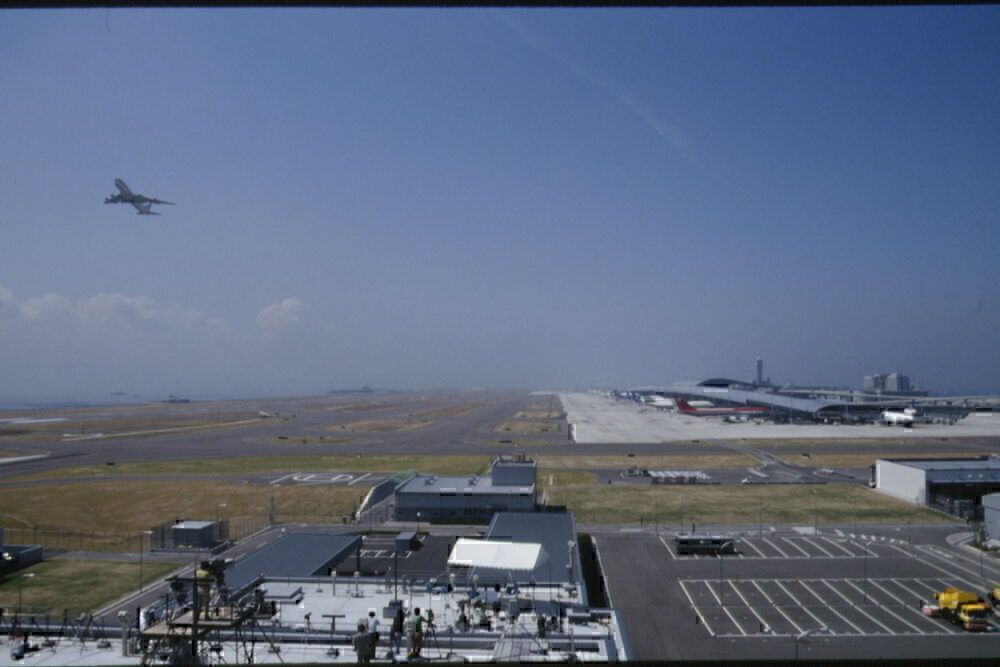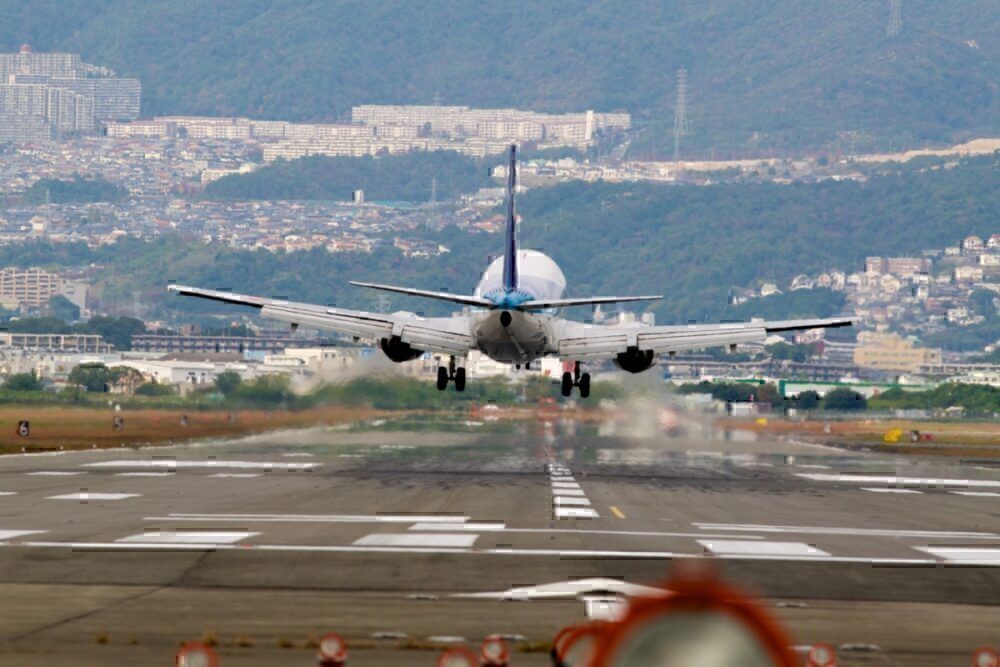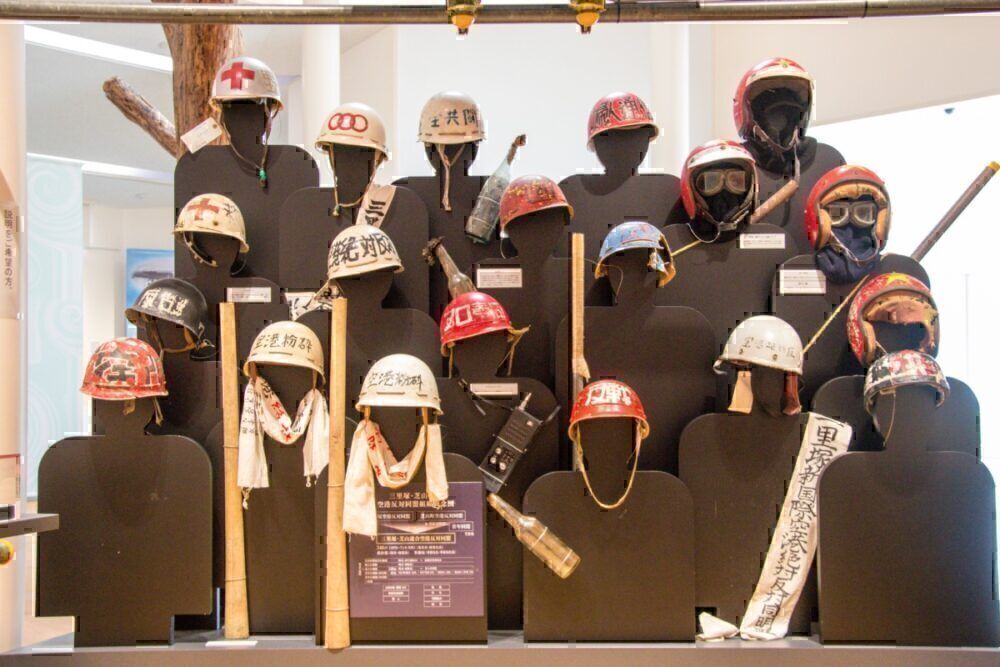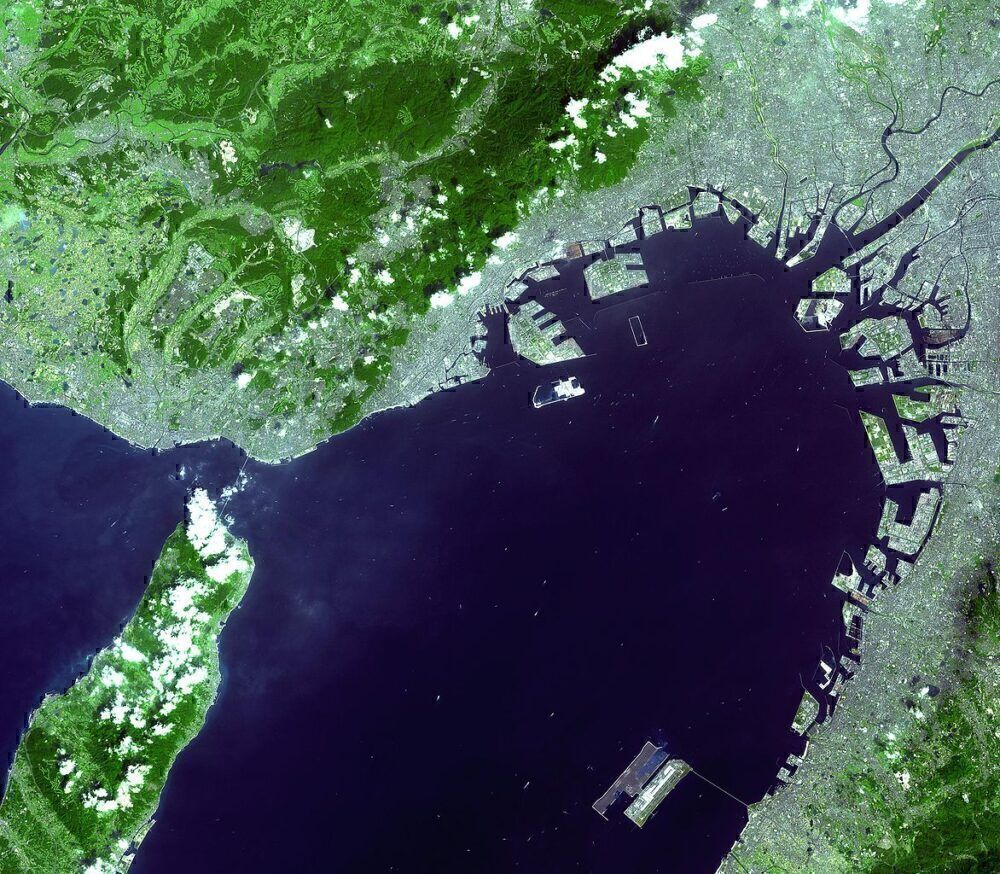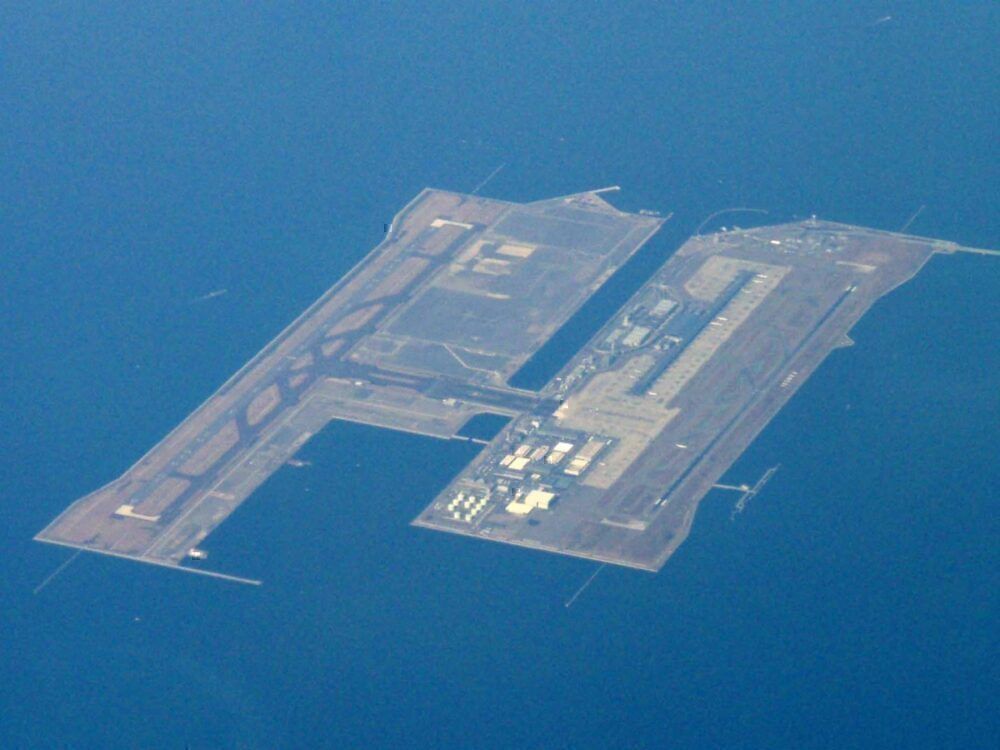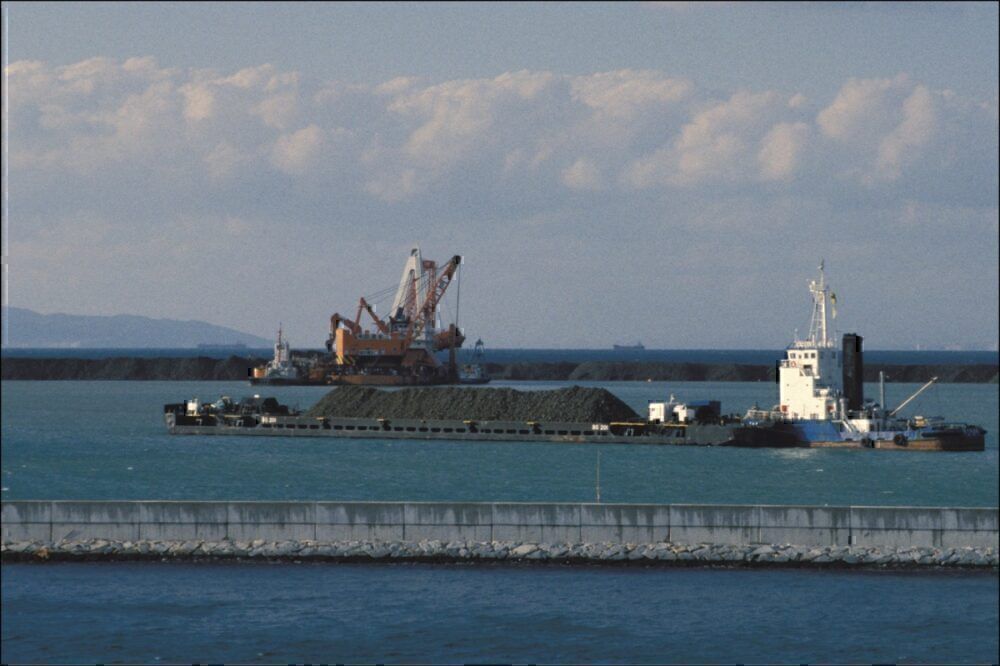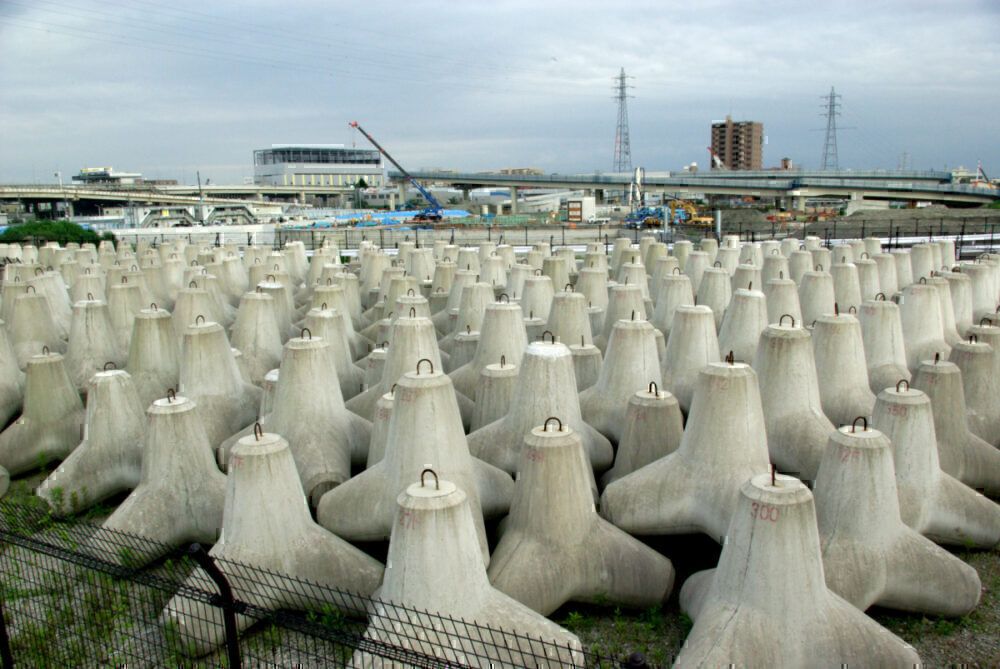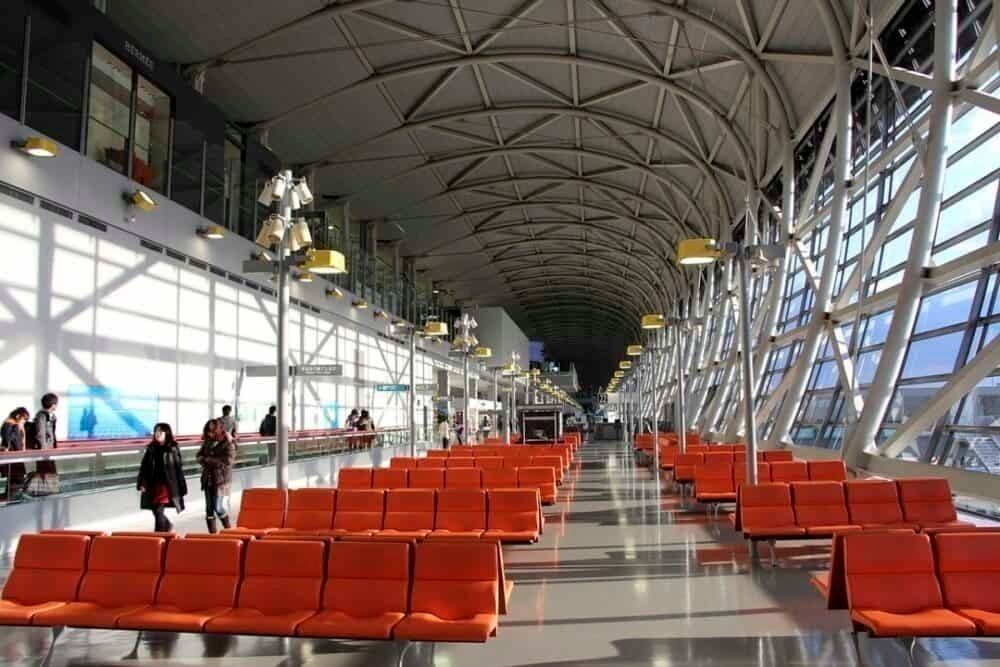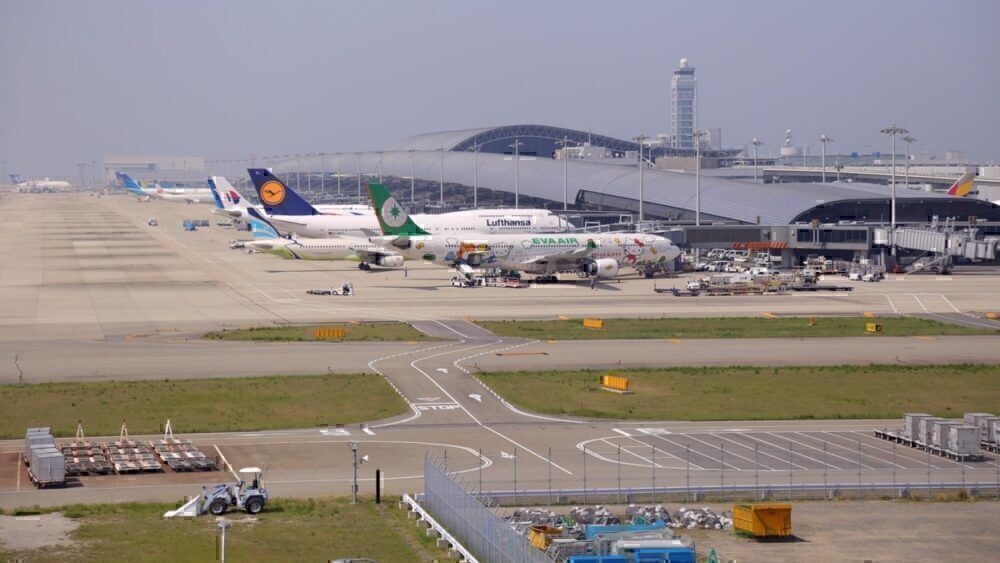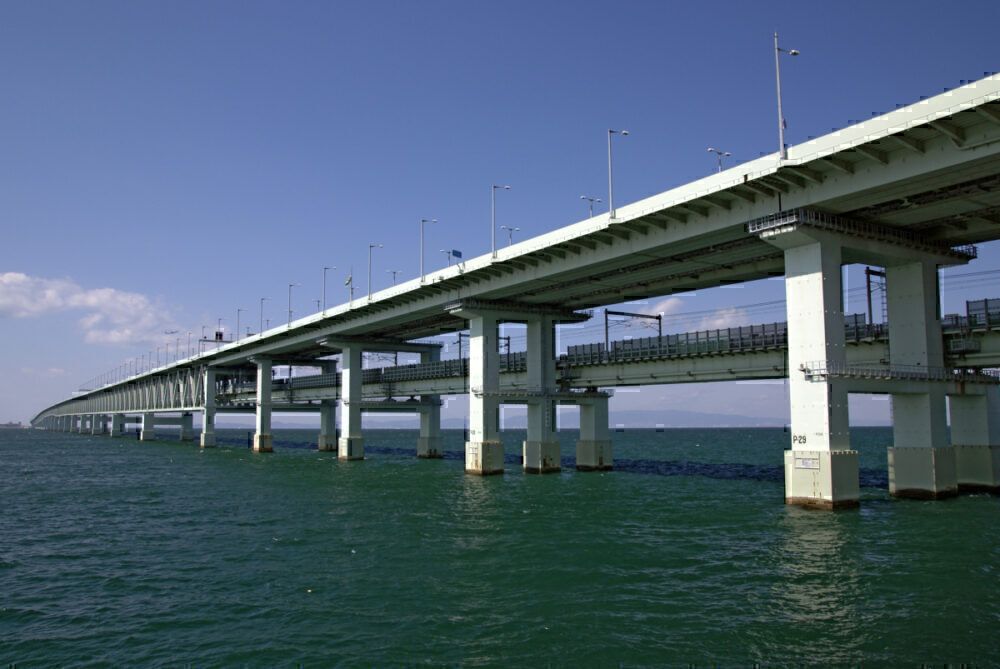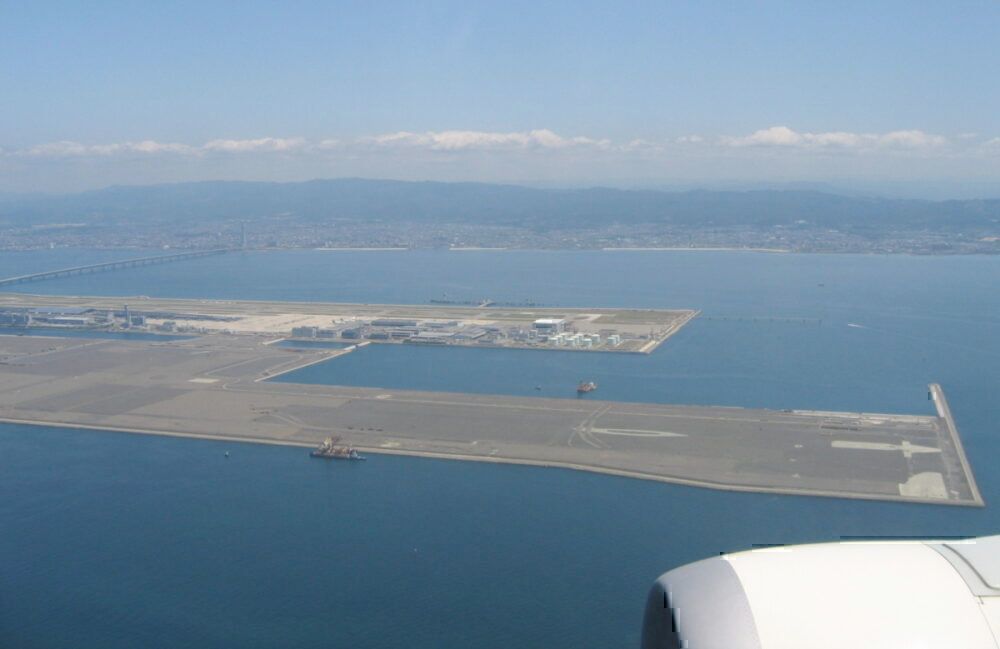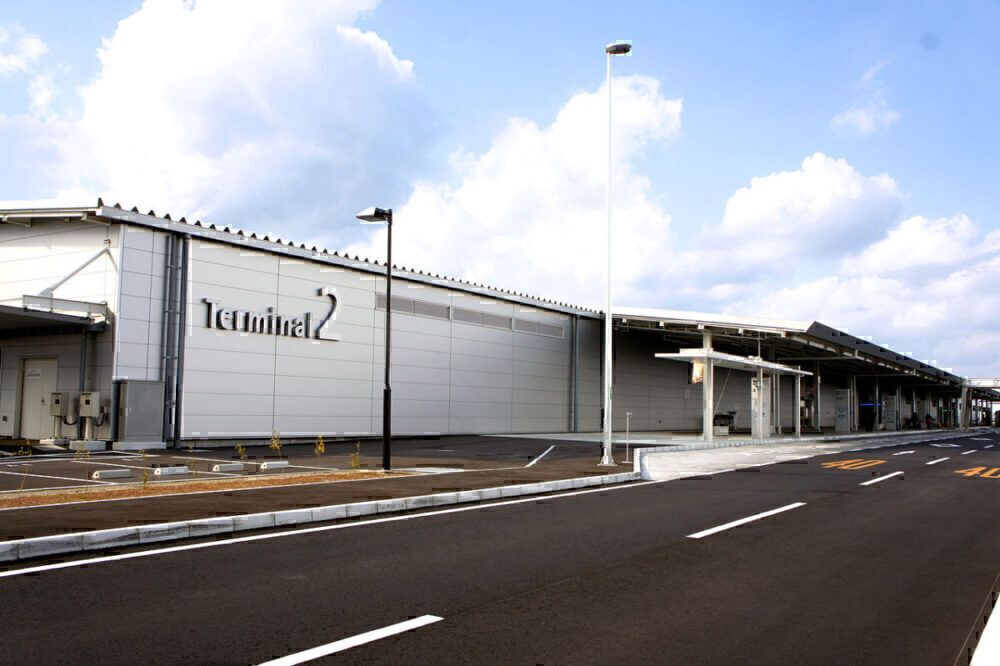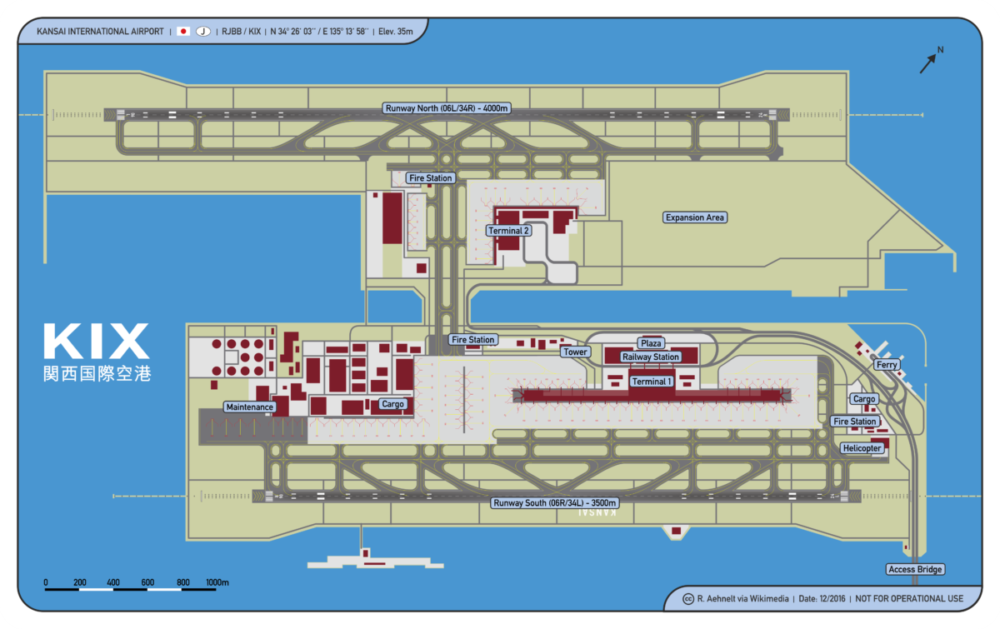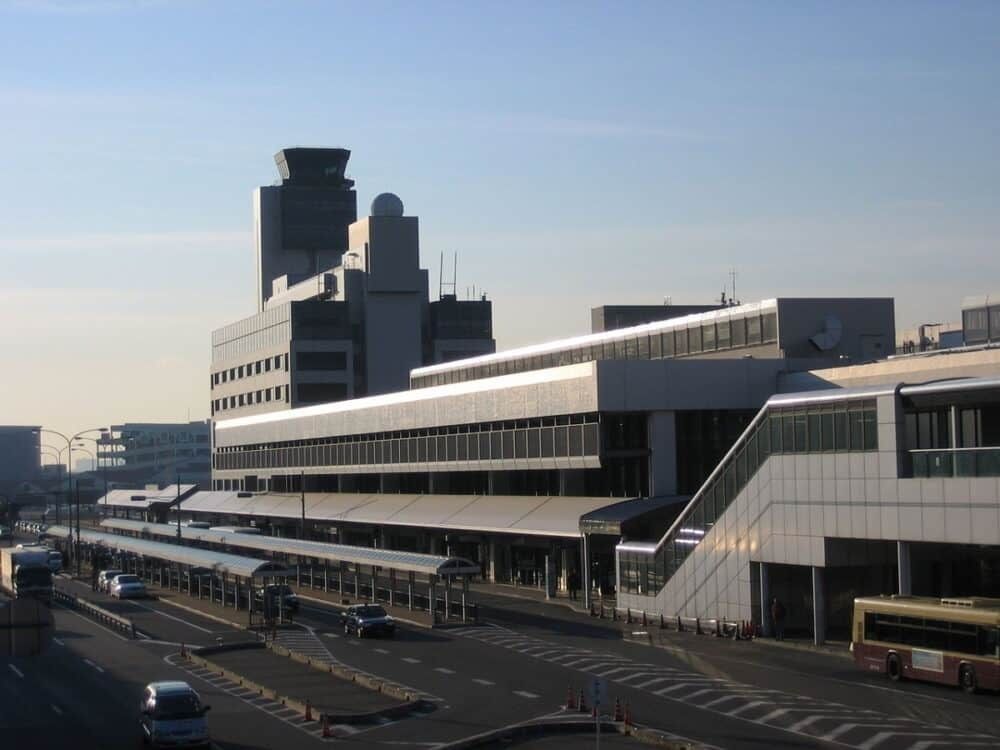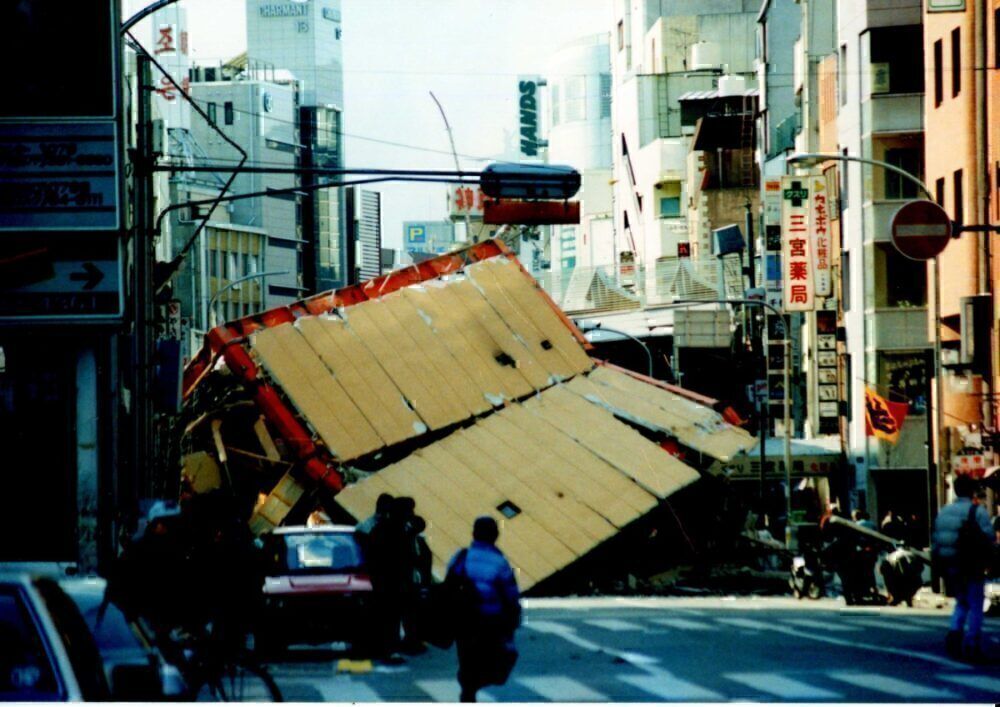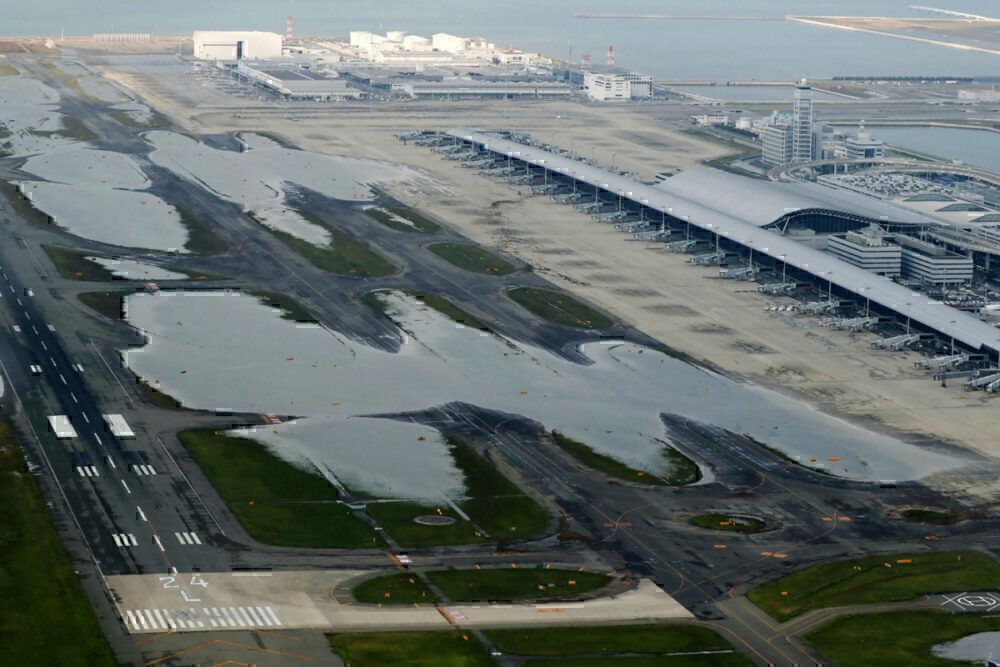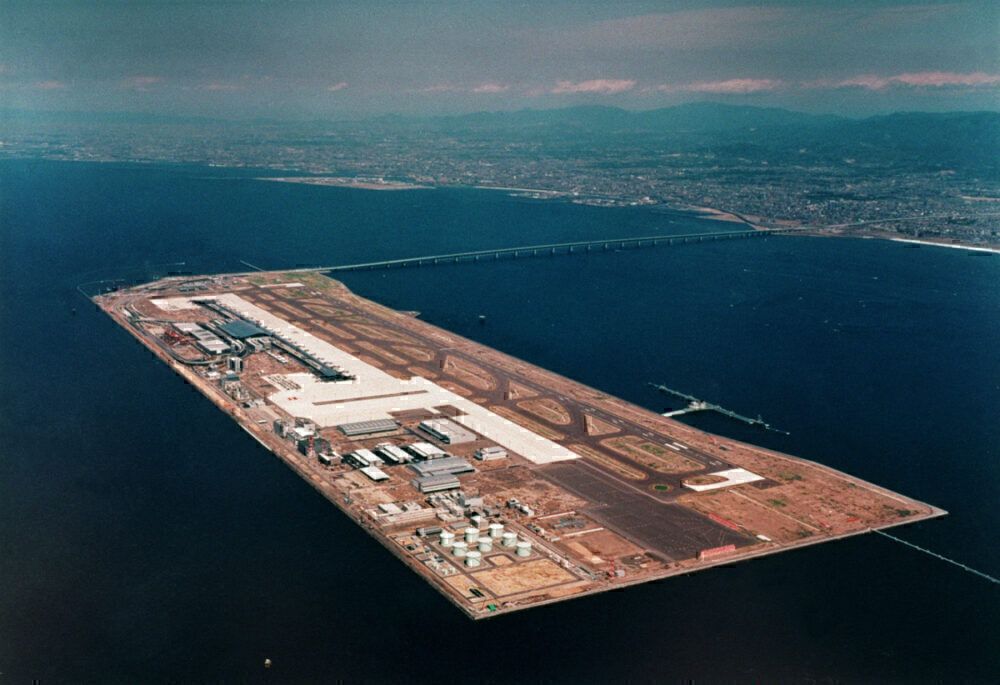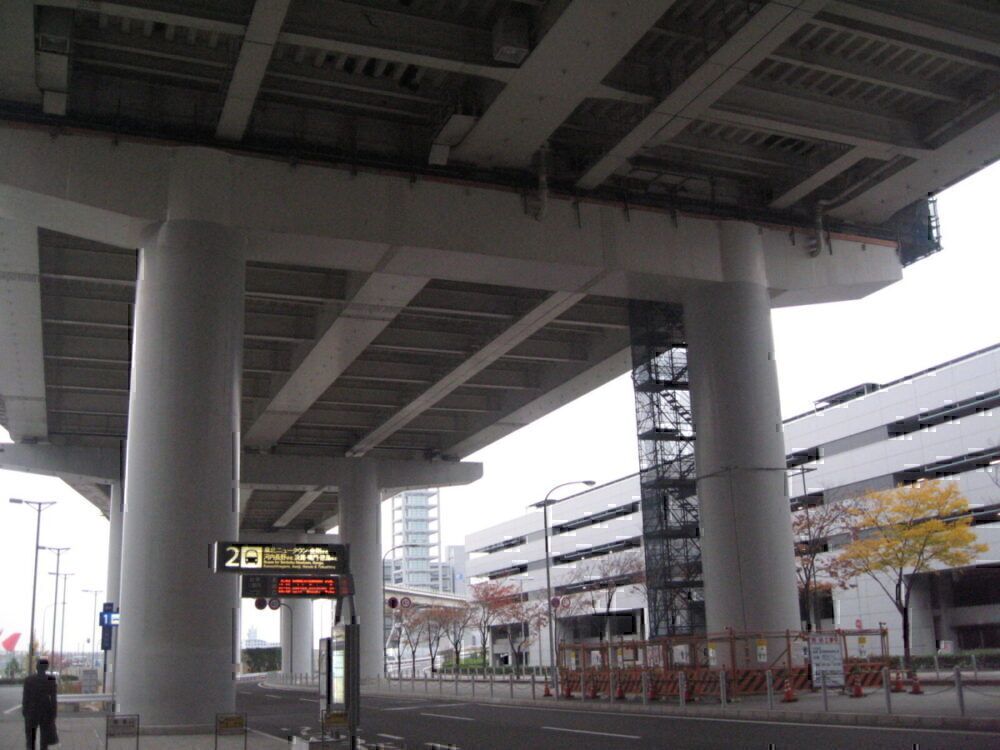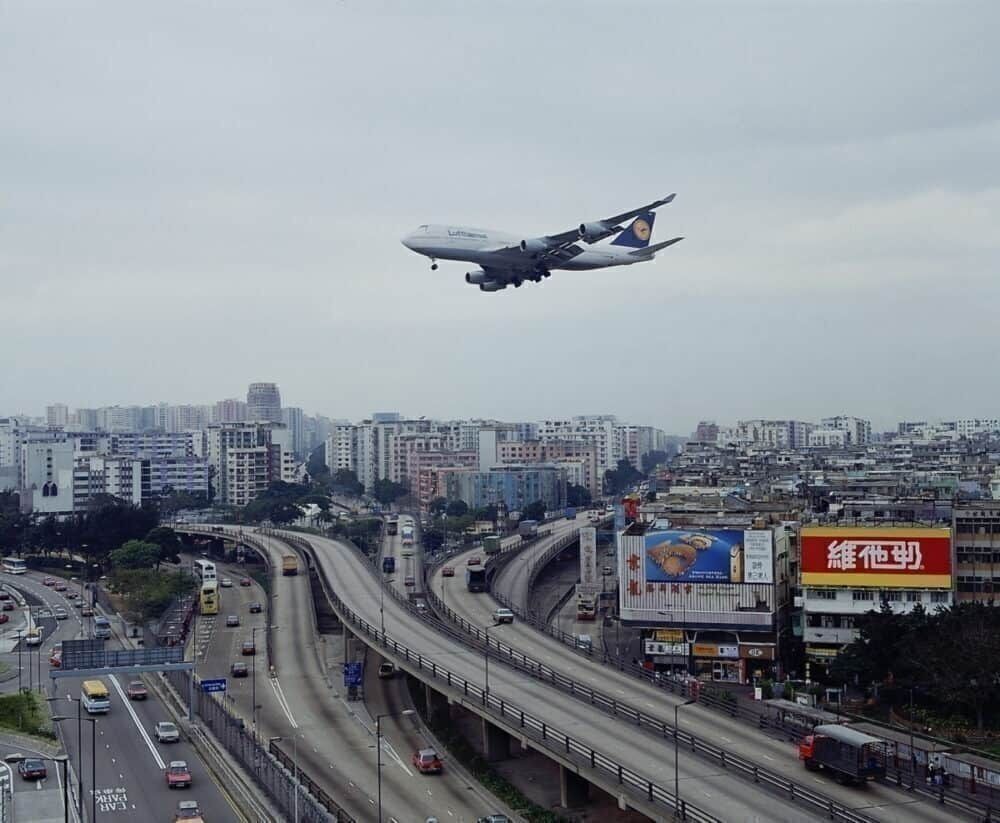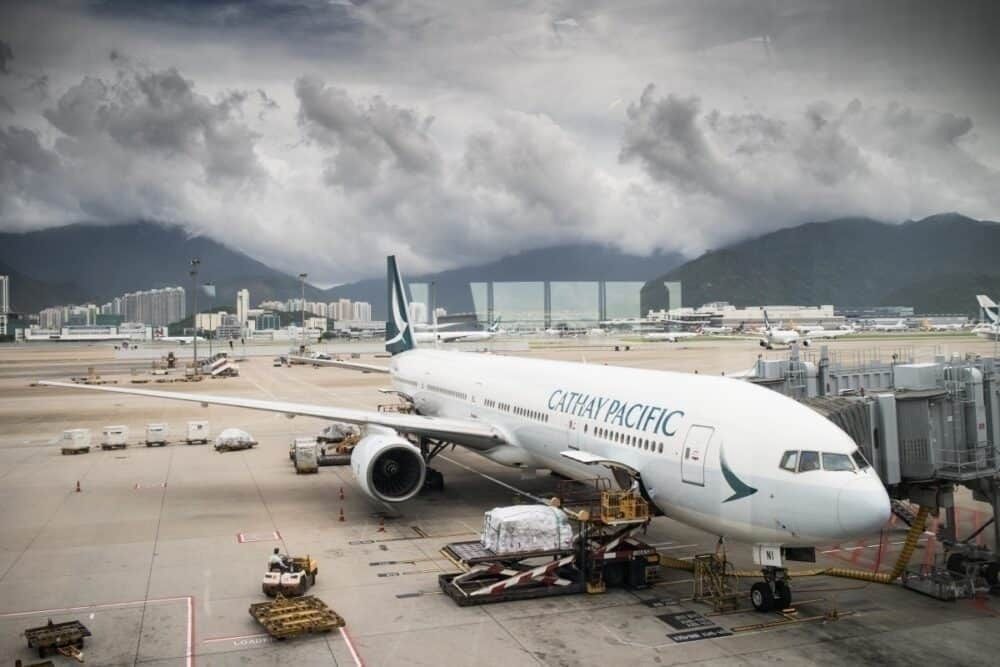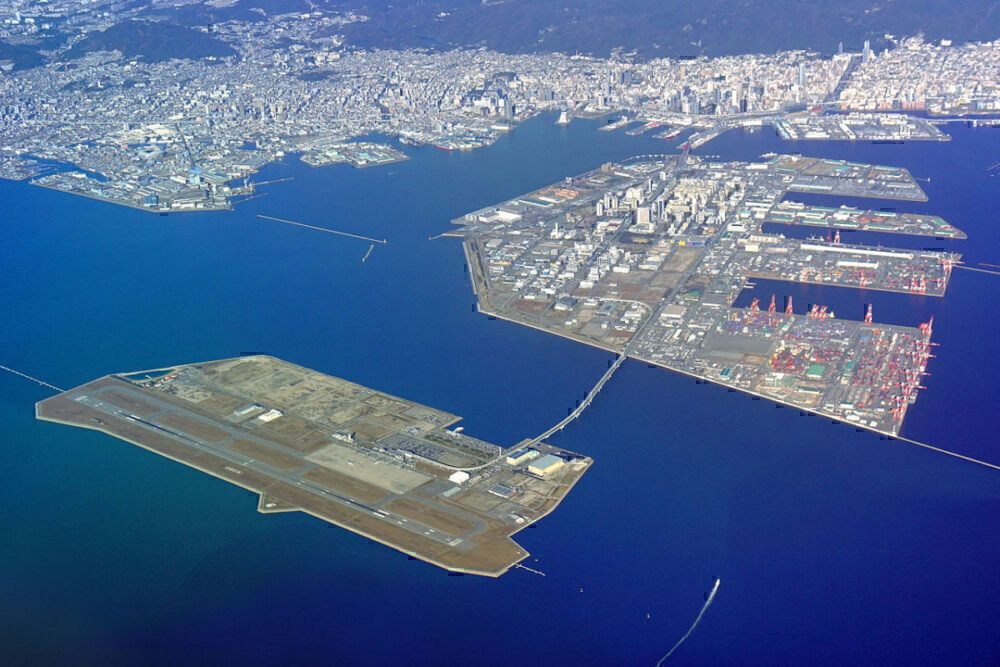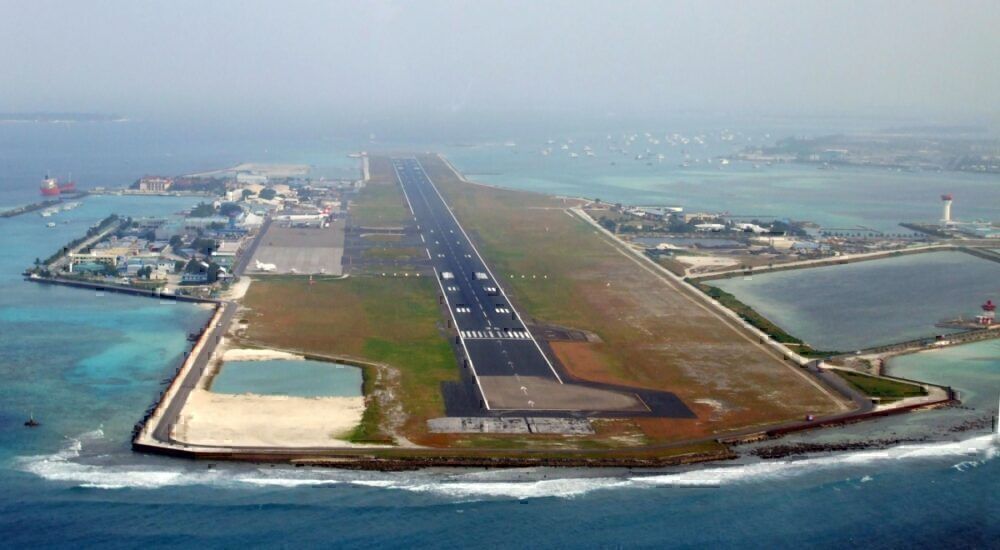Osaka Kansai airport is a spectacular construction, located on an artificial island in Osaka Bay. It was opened in 1994 and expanded in 2007.
As you can imagine, construction was no easy task. Two mountains were flattened to build the island, and, according to the Institution of Civil Engineers, at the time of its completion, it was the most expensive civil engineering project to date.
Despite some incredible engineering successes, and proven ability to withstand earthquakes and typhoons, issues are now appearing. Notably, the island is sinking faster than expected, leading to increasing problems with flooding.
This article takes a detailed look at the background, construction, operation, and plans for this unique airport. Read on and learn about one of the most impressive civil engineering projects in history, and an amazing airport to fly from.
[powerkit_toc title="Table of Contents" depth="2" min_count="4" min_characters="1000"]
Background to the airport
The need for an airport at Osaka
In the 1960s and '70s, some key events led to the construction of the airport.
Firstly, Osaka and Kobe were losing trade and business to Tokyo. Tokyo's second airport, Narita, was proposed as early as 1966 and opened in 1978. Many exporters had to ship cargo to Tokyo, rather than use the local airport.
Secondly, the existing airport, Itami, was starting to prove inadequate. Itami Airport is located in a densely populated suburb of Osaka. It opened in 1939 and was initially used by the Japanese Army and then the US military after the end of the Second World War. It was converted for civilian use and expanded from 1959, and soon became a central hub for international airlines.
Aviation, of course, has expanded significantly since then, and the airport has not been able to accommodate the demand. With the urban area around it, there was no room for expansion. Problems with noise and local objection did not help either. By the 1970s, it was already reaching capacity, and it was clear a new airport location was needed.
Choosing the location
An artificial island was not the first choice. The initial plan was to build the new airport close to Kobe. This could serve both cities easily with fast transport links, and Kobe did not have an airport of its own. The city of Kobe, however, rejected these plans, and airport planners were forced to look at other locations.
Learning from the problems faced at Itami, planners wanted a location away from built-up areas. This would allow large scale construction and 24-hour operation. They had also seen the problems faced in Tokyo with the planning of Narita airport.
In the 1960s, there were objections and protests by both residents and landowners (who claimed they were not consulted in the process) as well as left-wing political parties who objected to the promotion of capitalism and potential alliances with the US.
Following consideration of six offshore sites by the Ministry of Transportation, a proposal was made to construct an artificial island in Osaka Bay, to the south of the city. This would be four kilometers long, two and a half kilometers wide, and five kilometers offshore.
The airport would require extensive, sophisticated engineering both to construct and to ensure it could withstand flooding, typhoons, and earthquakes. This proposal was approved, and the construction of the island began in 1987.
Land reclamation in Japan
The idea of constructing such a large island in a deep bay (the water in the bay is 18 meters deep, with 30 meters of soft clay base beneath) may seem extreme. But there is an extensive history of land reclamation in Japan, where land is scarce (and expensive) in many locations.
Land reclamation in Osaka Bay dates back to the Edo period (1600-1867) when land was reclaimed to be used for rice cultivation close to the cities. But land reclamation really picked up across Japan after the end of the Second World War, with the country's rapid economic growth seeing a massive demand for new land. Real estate company Japan Property Central estimates that 0.5% of all land in Japan today is reclaimed.
Construction of the airport
Stabilizing the ground
Construction of the airport began in 1987. First of all, of course, came the considerable task of building the island. This took over three years and required the flattening of two local mountains.
The airport is, in fact, made up of two islands, each ultimately supporting one runway and terminal. Although construction began in 1987, this focussed first on Island I, to be completed in 1994. Island II would not be completed until 2007. Island I is slightly smaller at 511 hectares, while island II is 535 hectares.
The major challenge was not the depth of the water (only 18 meters), but the condition of the ground below the water. This is soft clay, known as alluvial clay, which holds around 70% water.
To deal with this, engineers used sand drains. These are pipes driven into the clay, and packed with sand. When the pipes are removed, the sand absorbs the water within the clay, reducing its ability to compress. As more weight is added, the moisture from the clay is forced out through the sand column. Over two million such sand drains were installed for Kansai's base.
Although stabilized, the ground (and the airport built on top) would sink further. Several experts were consulted on this, and a range of estimates developed for how much the airport could sink. According to reporting via the San Jose State University, these estimates ranged from 19 to 25 feet, and engineers built according to the lower estimates. It turned out this was not the best strategy.
Massive reclamation operation
After stabilizing the ground, the next step was to construct a sea wall and fill the reclamation site. The airport perimeter was set out using 69 large steel chambers. The spaces between the chambers were filled with 48,000 tetrapods (specially designed concrete structures used to protect the island from waves and surges by dissipating the oncoming water).
The central island space was then filled with rock. 430 million cubic meters of it were used, taken from three mountain sites between 10 and 30 kilometers inland from the bay.
The final height of these islands was critical. This had to be based on the estimates of the further sinking of the clay base layer. This would settle over time, but it could not be established precisely to what level.
The Journal of Geotechnical and Geoenvironmental Engineering reports that the final heights chosen were 36.7 meters above the seafloor for Island I, and 40-43 meters for Island II.
Starting airport construction
Construction of the airport facilities and terminal on Island I began in 1991, following completion of the island. Initially, one runway and terminal were built.
Italian architect Renzo Piano designed the main terminal building. His previous projects including the Pompidou Centre in Paris, and he has since gone on to design Potsdamer Platz in Berlin and the Shard in London.
The terminal is an impressive 1.7 kilometers in length. This makes it the longest terminal in the world, although several beat it for total size (Beijing's Daxing is now the world's largest). Early in construction, the government wanted to shorten this to save costs, but Renzo Piano insisted that the planned length was retained.
Adjustable columns support the terminals. These are designed to compensate for the continued sinking of the island and be extended by inserting metal plates at the base of the columns. The terminal roof is shaped like an aerofoil. This is not just an excellent aviation reference; it is designed to promote airflow.
Connecting the island to the mainland
As if the island and airport construction was not enough, a connection to the mainland was also needed. A 3.75-kilometer bridge was built, known as the Kansai International Airport Access Bridge. This connects to the mainland at Rinku Town, itself a development built on reclaimed land in the 1990s.
This is a double-decked bridge carrying six lanes of traffic with two rail lines below. Construction started in 1987, and it was completed by 1994, costing around $1 billion.
Protests and disruption
Authorities were keen to avoid the problems with protests and disruptions seen in Tokyo. While they were mostly successful, with a much less controversial offshore location, there were still some problems.
Interference from the local fishing industry, which would be disrupted post-construction, was avoided when a payment offer was accepted. But there were still protests at quarry sites, with around 24 attacks taking place.
Expansion and second runway in 2007
Work on the second terminal and runway began in 2003. The airport operator had waited to start this project in order to monitor the sinking of the islands. This had already been noted as an issue with the first island. With the airport reaching capacity at peak times, though, the construction of a new runway was prioritized, but the second terminal was delayed.
The second runway opened in August 2009. It is longer than the first runway (4,000 meters compared with 3,500 meters).
Terminal 2 opened in 2012. It is a more straightforward construction and design than Terminal 1 - smaller, single-story, and with no jet bridges. It was designed specifically for low-cost carriers and offered lower landing fees.
Additional work that has taken place since the first runway and terminal opened include additions to the seawall. When it was realized that the airport was sinking faster than initially predicted, the seawall was raised, at the cost of $150 million.
Plans have been developed for further expansion, including a third runway and a new cargo terminal. As of 2020, however, these are on hold.
Airport operation
The airport opened on September 4th, 1994. The first runway and main terminal opened at this time, while construction continued on the second island, and second runway and terminal building. Kansai soon became the main base for all international flights, with Itami airport handling just domestic flights.
The early operation, however, was hindered by high prices. According to reporting by the New York Times in 1993, to cover some of the $14 billion construction cost, the government raised rents and landing fees.
These landing fees were the highest of any airport in the world. For example, landing fees for a Boeing 747 were set at $10,000 (compared to just $2,500 at JFK airport in New York and $8,500 at Tokyo Narita airport).
Operating alongside Itami
Since 1994, Itami has operated for domestic flights only (although there are some exceptions, including charter flights and VIP flights). To further boost the use of Kansai, the government has placed restrictions on Itami, including only allowing two-engine aircraft since 2006.
Kansai and Itami airport authorities were merged by 2012 (but still government-controlled). This led to many improvements in joint operations, including bus links between the airport and the reduction of landing fees at Kansai. Kansai Airports, a private Japanese consortium, took over the running of both airports in 2016 after bidding for a 45-year operating contract from the government. It added Kobe airport in 2018.
Airport passenger and cargo volumes
As of 2019, Kansai airport was the third busiest in Japan (and 30th in Asia). Passenger and cargo volumes were as follows (according to Kansai airport):
- Passengers: 28.8 million (22 million of these were international passengers)
- Cargo volume: 757,000 tonnes
For comparison, Tokyo Narita airport handled 33.4 million passengers and 2.2 million tonnes of cargo in 2018, based on government data.
While it may not be the busiest airport, it is popular. It was placed tenth most popular global airport in the Skytrax World Airport Awards in 2020, and second most popular in its medium-size category. It also picked up an award for best airport staff, and best baggage delivery globally!
Surviving typhoons, and earthquakes
A significant part of the airport design and construction focussed on protection from Japan's extreme weather events.
A major test of this came with the Kobe earthquake in January 1995. Also known as the Great Hanshin Earthquake, this was Japan's worst earthquake since 1923 and left more than 6,000 people dead.
The epicenter was about 20 kilometers away from the airport. Despite extensive damage to buildings at a similar distance, the airport was almost undamaged. This success is attributed to the use of sliding joints in all airport building construction.
It has also coped well with several typhoons over the years, including an extreme one in 1998 with winds of over 210 kilometers per hour. This lasted until 2018 when Typhoon Jebi hit the airport. This was the strongest typhoon to hit Japan since 1993, and it caused extensive damage across the Kansai region.
Waves broke over the airport walls and flooded the runways, and a tanker damaged the bridge. Full operations at the airport did not start again for nearly a month. Although this was an extreme weather event, it again started a discussion about the problems with the airport and how it was sinking closer to sea level.
Is the airport sinking?
Since the time of its conception, the issue of the further sinking of Kansai airport has been a major one. Its foundations are on a thick layer of clay, and predictions vary regarding how much it will sink.
The sand drain method used to strengthen the seafloor would result in further sinking as the still wet sand compressed under the weight. The weight of the airport and aircraft, of course, is nowhere near as significant as the vast mass of stone making up the island!
According to the Institution of Civil Engineers, the airport sink rate fell from 50cm a year in 1994 to 7cm a year in 2008.
Reaching its limits
A study in the Journal of Geotechnical and Geo-environmental Engineering in 2015 looked at how much the airport had sunk. The airport design specification was that it should reach a minimum level of four meters about sea level (which should still prevent flooding if the seawall is damaged).
This report shows that the first island had already reached this level by 2015, and the second island was predicted to do so between 2023 and 2026. Furthermore, the two islands would reach sea level by 2067 and between 2058 and 2100, respectively.
The problem is due simply to a difference between the planning engineers' estimates and the sinking rate that has occurred in reality. In reporting in Air & Space Magazine, Yukako Handa, communications director for Kansai Airports, explained this:
"When the Kansai airport was constructed, the amount of soil to reclaim the land was determined based on necessary ground level and subsidence estimation over 50 years after the construction."
Unequal sinking rates
A further concern, highlighted by Air & Space Magazine, is the unequal sinking at different parts of the airport. At the center of the main terminal on the first island, for example, a higher sinking rate is being measured that at the ends of the building.
Previously, this was experienced at other locations. To prevent damage or cracking, the airport runways were repaved with asphalt rather than concrete.
What can be done?
Of course, the actual rate of further sinking may turn out to be different from what is estimated now, just as the original estimate did.
The risk with further sinking is that as it approaches sea level, any storms or typhoons are more likely to cause water to break over the sea wall and engulf the airport. There is little that can be done to change this fundamentally, but the construction does allow for some minimizing of damage and disruption.
One option is to raise the sea wall further. This has been done once, at significant expense, and there are plans to raise it further. According to the Straits Times, a three-year project began in 2019 to further raise the sea walls.
As well as this, the runways will also be raised by one meter, by increasing the layers of asphalt. The newspaper notes that $510 million (54 billion Yen) is currently set aside for disaster prevention measures, but this may increase as part of this project.
The other protection is the ability to raise the buildings. The foundation columns can be adjusted (as discussed previously) by inserting metal plates to offset the sinking. According to Air and Space Magazine's reporting, this takes place every two years, with each of the columns checked and adjusted as necessary.
One of several island airports
Despite its challenges, Osaka Kansai has been hailed as a significant civil engineering success. Lessons learned from the construction, and the challenges of the ongoing sinking, have fed into the development of several other island airports.
Not least, future constructions have been more aware of pricing. When it opened in 2004, the total cost of Kansai airport was estimated at around $8 billion (according to Air and Space Magazine). But by 2008, this had risen to $20 billion, primarily due to problems associated with the reclaimed island construction.
Other significant airport islands include:
Hong Kong International Airport
One of the other most significant island airports is in Hong Kong, formally known as Chek Lap Kok Airport. This opened in 1998, to replace the old Kai Tak airport. This had operated since 1925, but with its location blocked in by urban development, it had the same issues with expansion and noise as Osaka's Itami airport.
The island location was studied and selected during the 1980s. As with Kansai, it could be built large and was far from the urban areas so that it could operate 24 hours a day.
The artificial island was constructed by flattening two local islands, to create 12.48 square kilometers of reclaimed land. According to reporting from the Airport Authority of Hong Kong, this added 1% to the total land area of Hong Kong!
And as with Kansai, more expansion is possible. Plans are underway to add a third runway, using additional reclaimed land to the north.
Kobe
In an ironic twist to the story of Kansai airport, Kobe (which turned down the chance to host Kansai airport), opened its own island airport in 2006. Plans for its airport gathered momentum following the Kobe earthquake, with the development hoped to help economic recovery.
The single-runway airport is built on an artificial island just offshore from Kobe city. It is much smaller than Kansai airport and mainly handles domestic and some regional international flights.
Nagoya Chubu Centrair International
Nagoya Centrair airport was the second artificial island airport to be built in Japan (technically Nagasaki was built before it, but on a previously used reclaimed island).
Construction of the island and airport began in 2000, and it opened in 2005. It serves Nagoya and the surrounding area, the third-largest metropolitan area in Japan after Tokyo and Osaka/Kansai. Again, the motivation for its offshore location was to avoid built-up areas and allow 24 hours of operation, with a particular interest in this from the heavy industry in the area (including Toyota and Mitsubishi).
Male airport, Maldives
Japan is not the only country to build airports on islands. The Maldives is keen on these too, but for a different reason. It simply has a lack of space for them.
The main airport in the Maldives, Malé International Airport, is built on Hulhulé Island. This is not an artificial island or reclaimed land but instead built on a coral island or atoll. It has a single 3,200-meter runway, just two meters above sea level.

